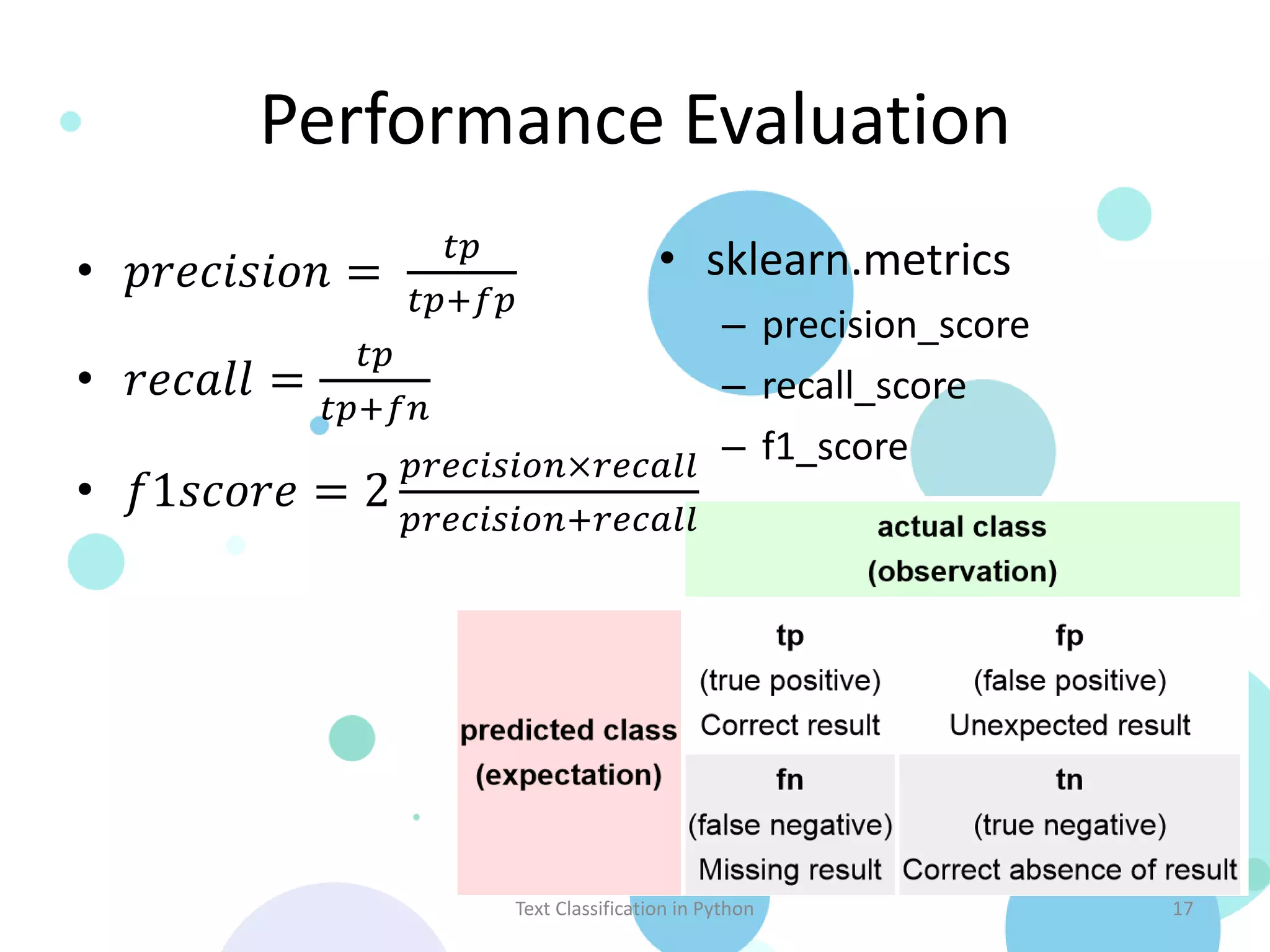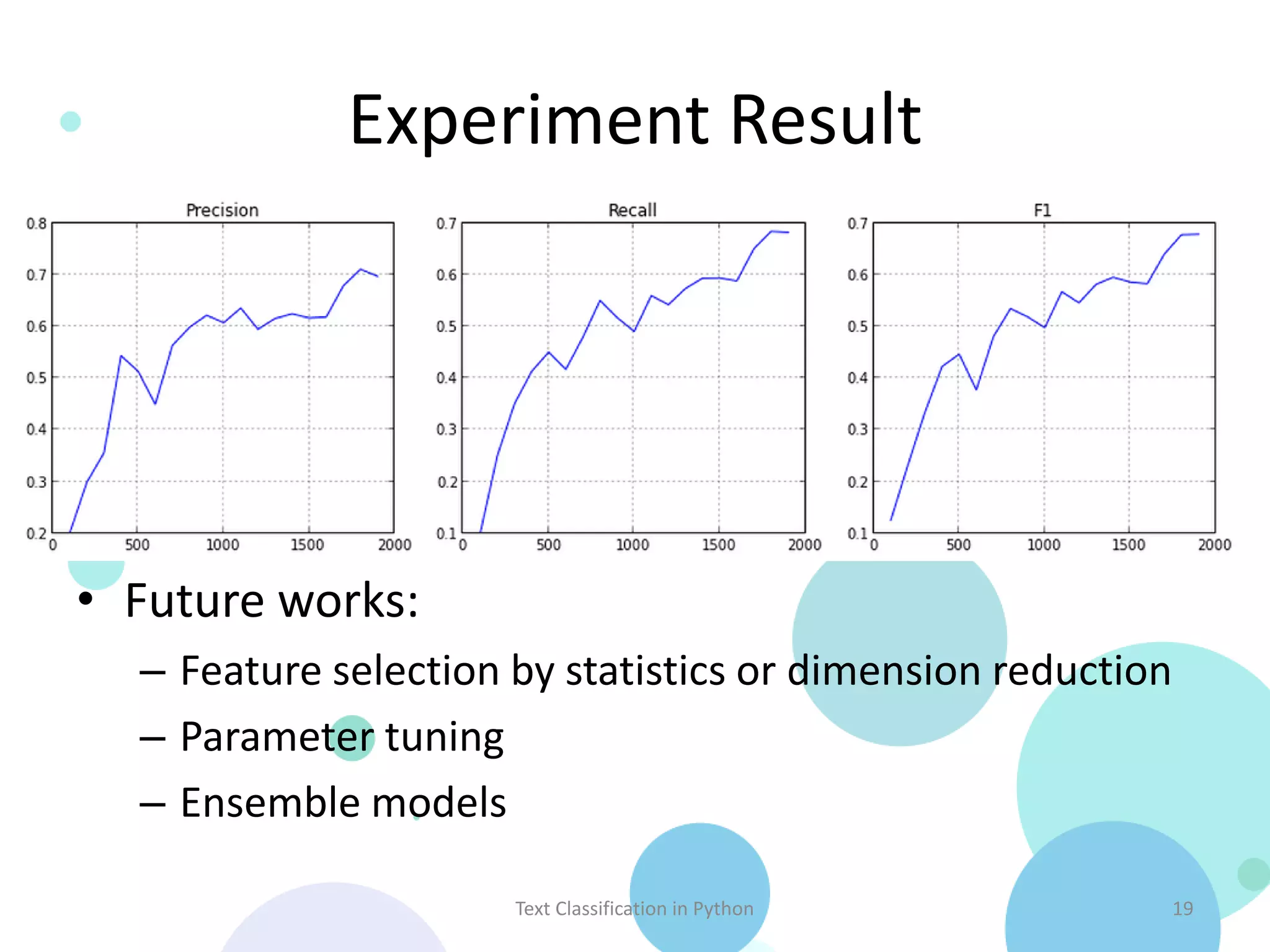The document discusses text classification in Python utilizing libraries such as pandas, scikit-learn, and matplotlib. It covers the entire process from data collection and feature extraction to classification model training and performance evaluation using iPython notebooks for fast prototyping. Additionally, it includes practical examples, demo code, and references for further learning.
![Text Classification in Python – using Pandas, scikit-learn, IPython Notebook and matplotlib Jimmy Lai r97922028 [at] ntu.edu.tw http://tw.linkedin.com/pub/jimmy-lai/27/4a/536 2013/02/17](https://image.slidesharecdn.com/textclassificationinpython-130218042632-phpapp01/75/Text-Classification-in-Python-using-Pandas-scikit-learn-IPython-Notebook-and-matplotlib-1-2048.jpg)
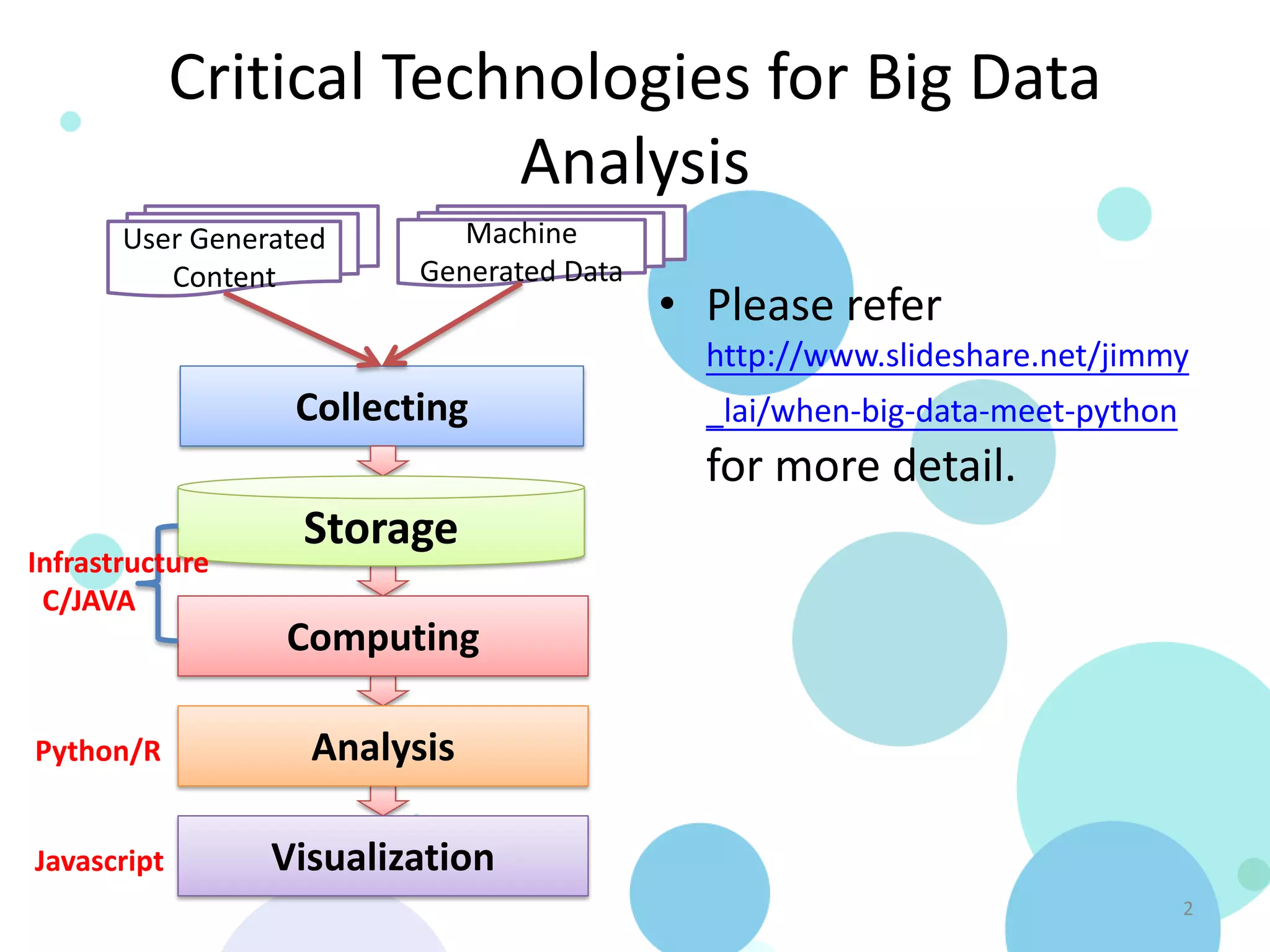
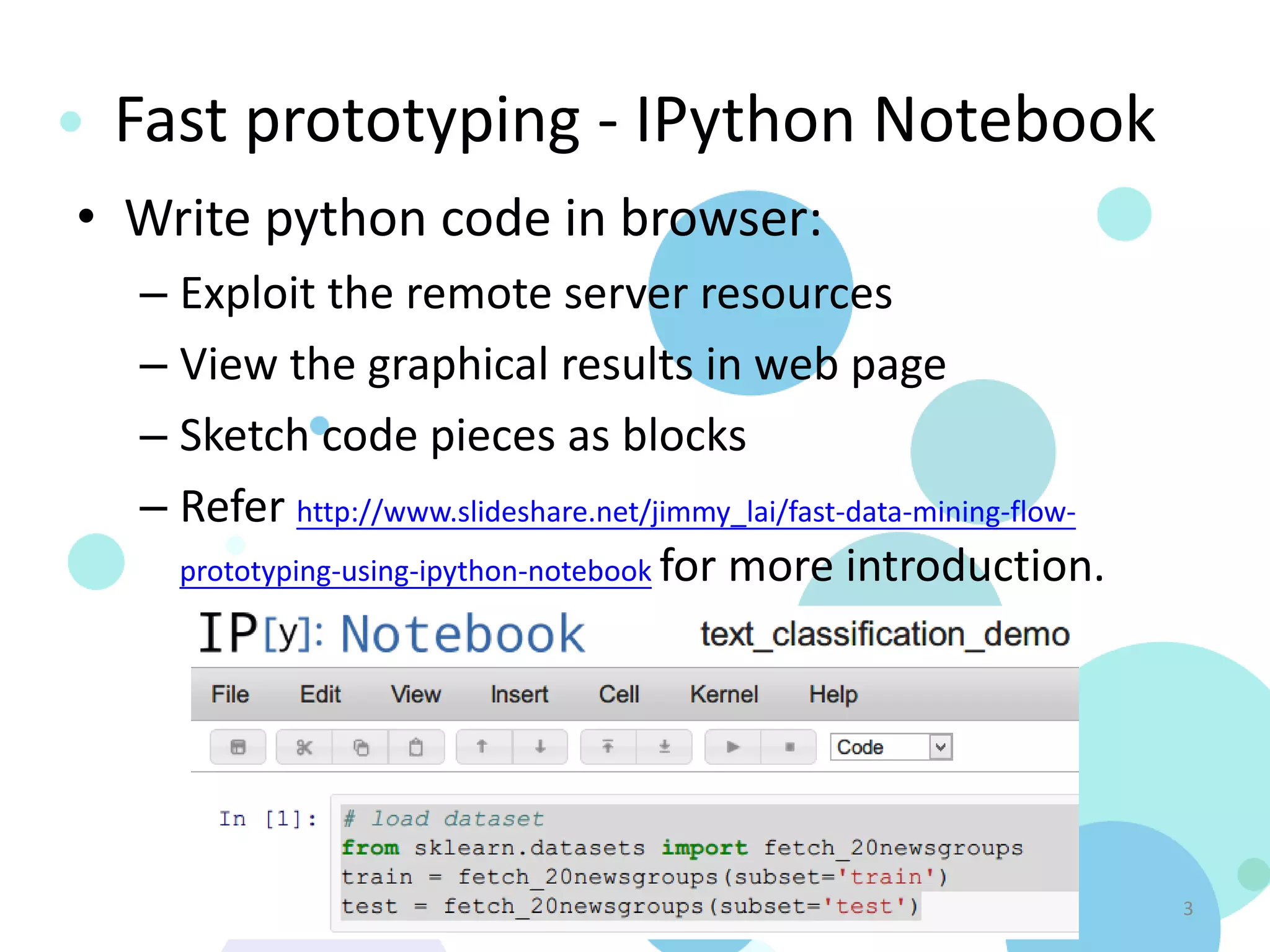
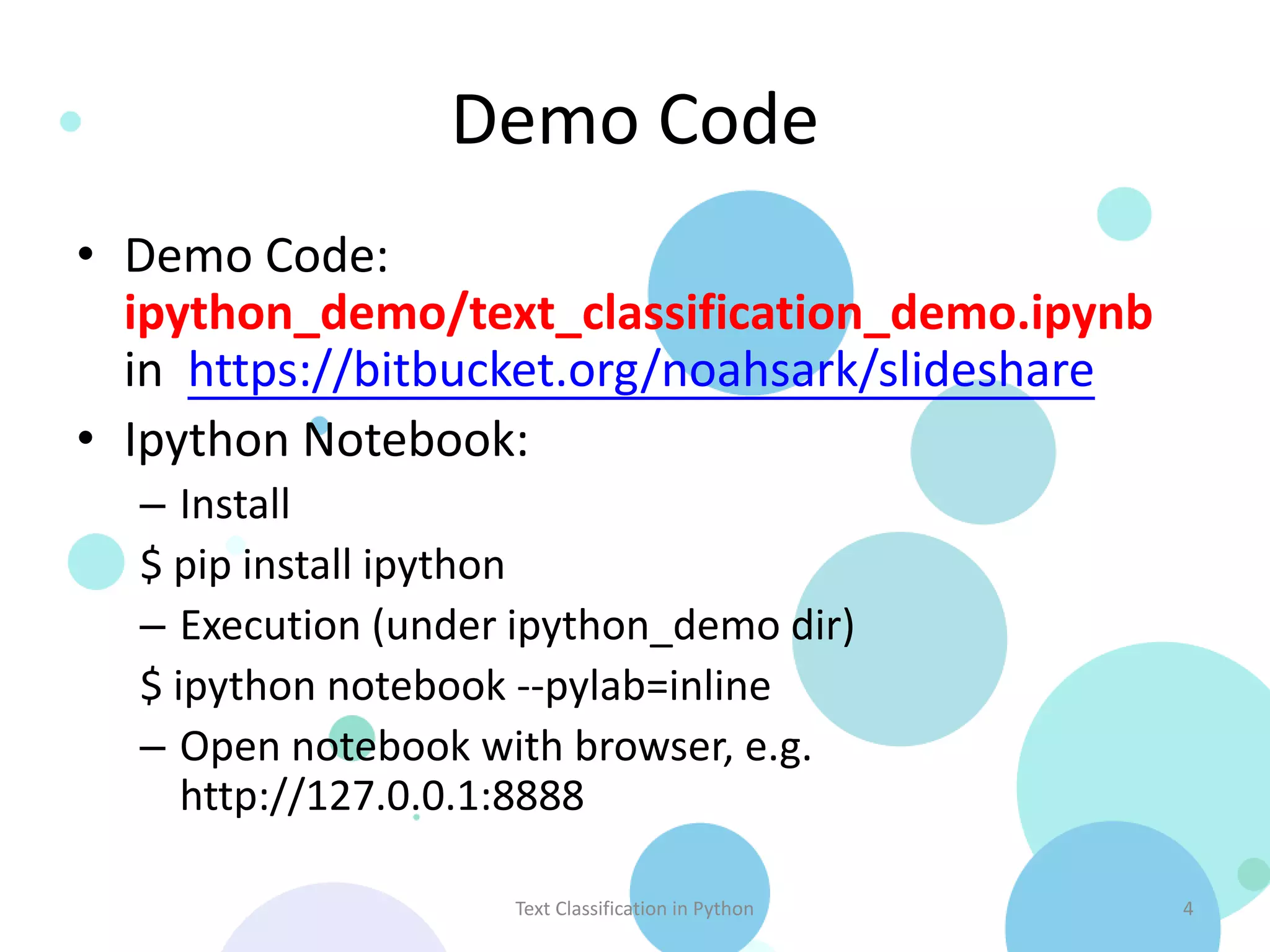
![Machine learning classification • 𝑋 𝑖 = [𝑥1 , 𝑥2 , … , 𝑥 𝑛 ], 𝑥 𝑛 ∈ 𝑅 • 𝑦𝑖 ∈ 𝑁 • 𝑑𝑎𝑡𝑎𝑠𝑒𝑡 = 𝑋, 𝑌 • 𝑐𝑙𝑎𝑠𝑠𝑖𝑓𝑖𝑒𝑟 𝑓: 𝑦 𝑖 = 𝑓(𝑋 𝑖 ) Text Classification in Python 5](https://image.slidesharecdn.com/textclassificationinpython-130218042632-phpapp01/75/Text-Classification-in-Python-using-Pandas-scikit-learn-IPython-Notebook-and-matplotlib-5-2048.jpg)

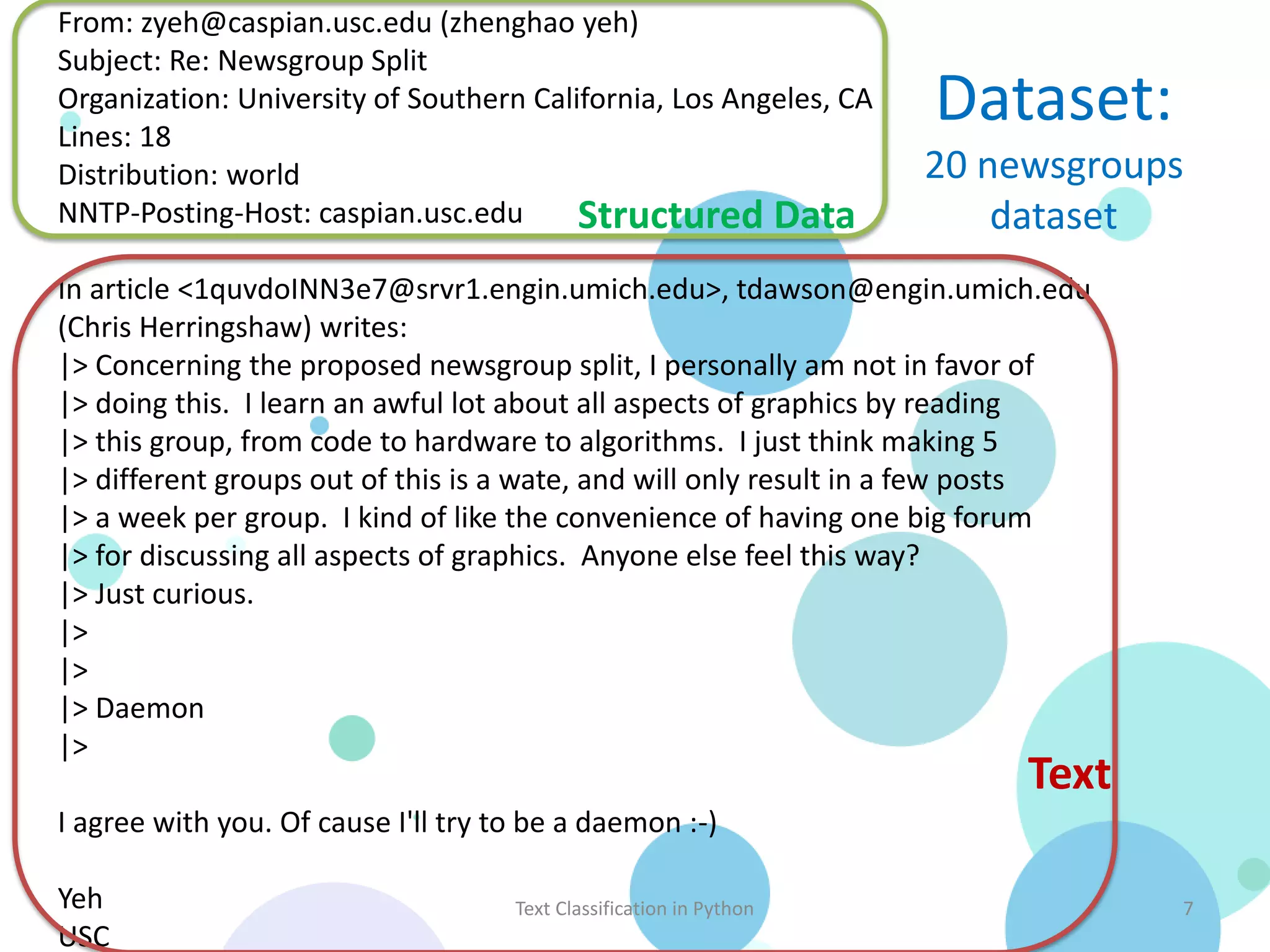
![Dataset in sklearn • sklearn.datasets – Toy datasets – Download data from http://mldata.org repository • Data format of classification problem – Dataset • data: [raw_data or numerical] • target: [int] • target_names: [str] Text Classification in Python 8](https://image.slidesharecdn.com/textclassificationinpython-130218042632-phpapp01/75/Text-Classification-in-Python-using-Pandas-scikit-learn-IPython-Notebook-and-matplotlib-8-2048.jpg)
![Feature extraction from structured data (1/2) • Count the frequency of Keyword Count keyword and select the Distribution 2549 keywords as features: Summary 397 ['From', 'Subject', Disclaimer 125 File 257 'Organization', Expires 116 'Distribution', 'Lines'] Subject 11612 • E.g. From 11398 Keywords 943 From: lerxst@wam.umd.edu (where's my thing) Subject: WHAT car is this!? Originator 291 Organization: University of Maryland, College Organization 10872 Park Lines 11317 Distribution: None Internet 140 Lines: 15 To 106 Text Classification in Python 9](https://image.slidesharecdn.com/textclassificationinpython-130218042632-phpapp01/75/Text-Classification-in-Python-using-Pandas-scikit-learn-IPython-Notebook-and-matplotlib-9-2048.jpg)
![Feature extraction from structured data (2/2) • Separate structured • Transform token matrix data and text data as numerical matrix by – Text data start from sklearn.feature_extract “Line:” ionDictVectorizer • E.g. [{‘a’: 1, ‘b’: 1}, {‘c’: 1}] => [[1, 1, 0], [0, 0, 1]] Text Classification in Python 10](https://image.slidesharecdn.com/textclassificationinpython-130218042632-phpapp01/75/Text-Classification-in-Python-using-Pandas-scikit-learn-IPython-Notebook-and-matplotlib-10-2048.jpg)
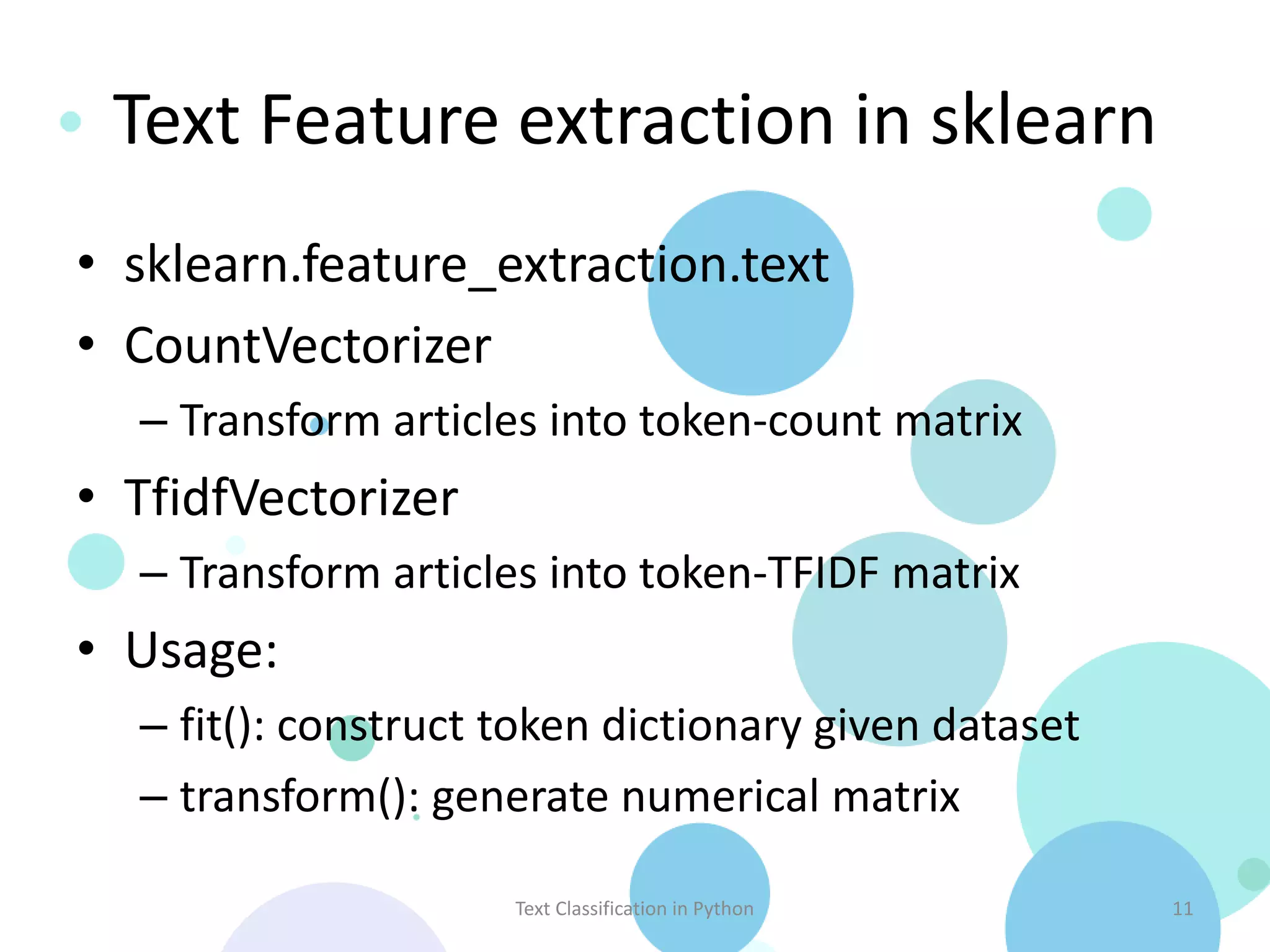
![Text Feature extraction • Analyzer – Preprocessor: str -> str • Default: lowercase • Extra: strip_accents – handle unicode chars – Tokenizer: str -> [str] • Default: re.findall(ur"(?u)bww+b“, string) – Analyzer: str -> [str] 1. Call preprocessor and tokenizer 2. Filter stopwords 3. Generate n-gram tokens Text Classification in Python 12](https://image.slidesharecdn.com/textclassificationinpython-130218042632-phpapp01/75/Text-Classification-in-Python-using-Pandas-scikit-learn-IPython-Notebook-and-matplotlib-12-2048.jpg)
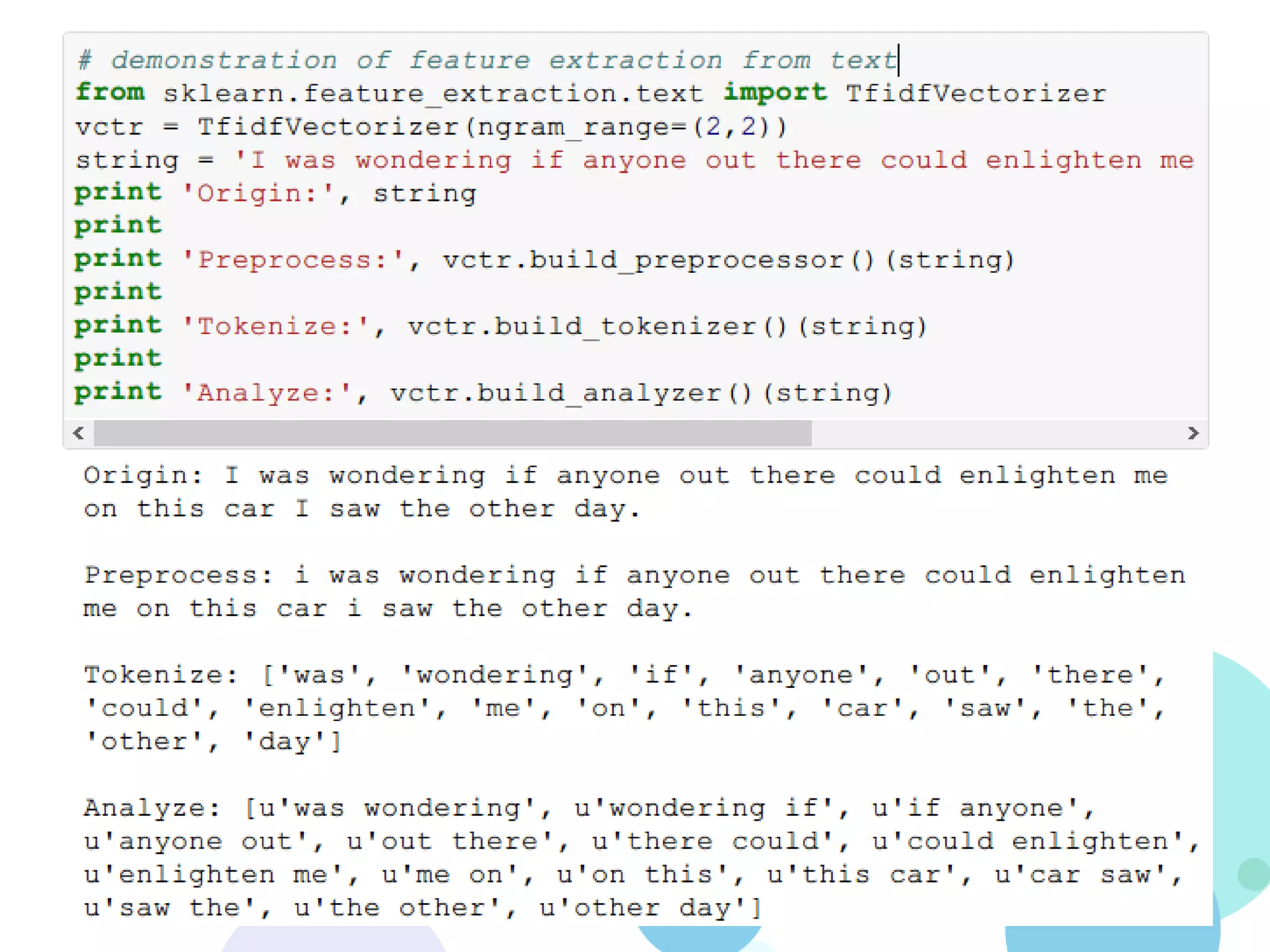
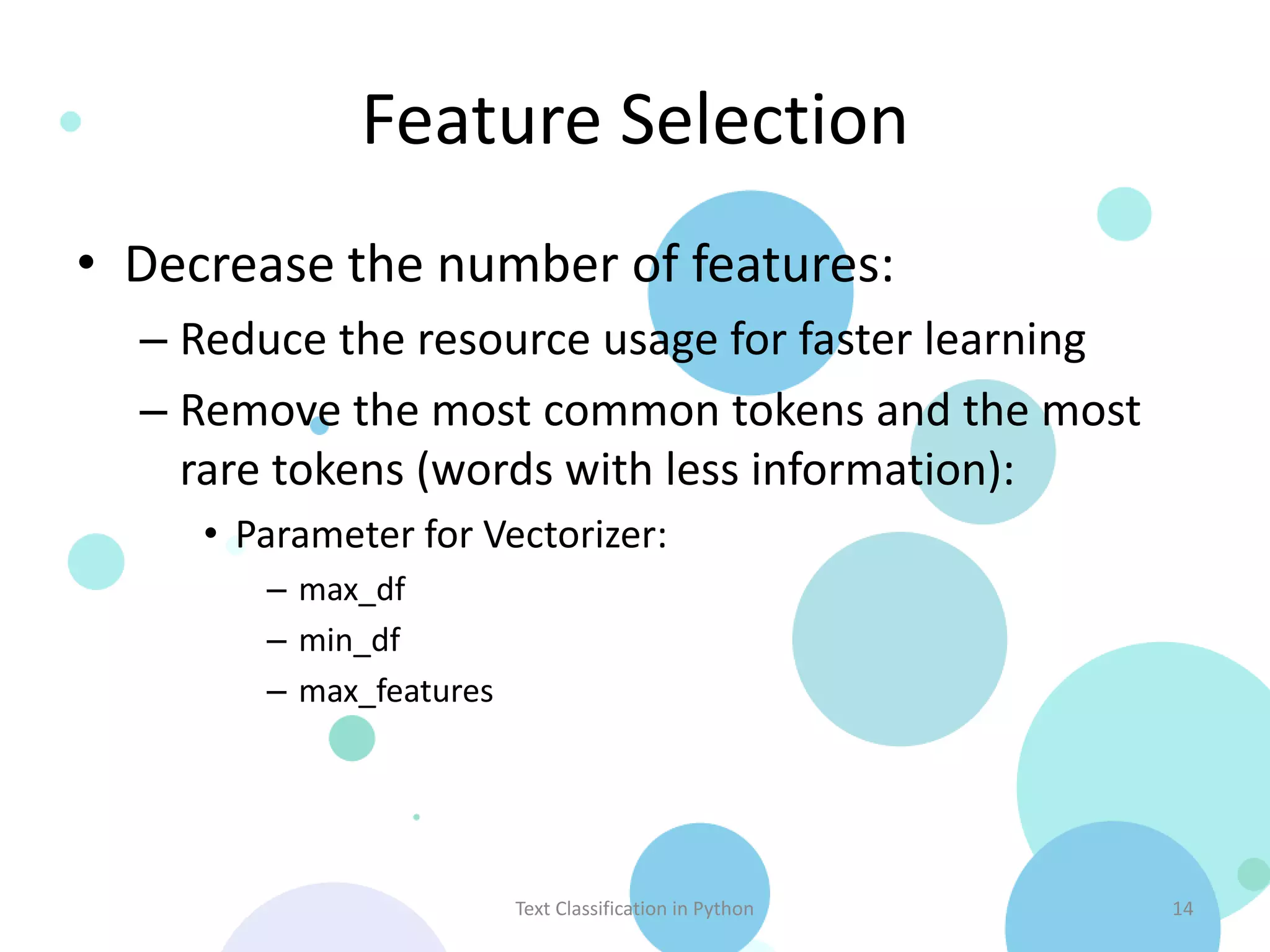
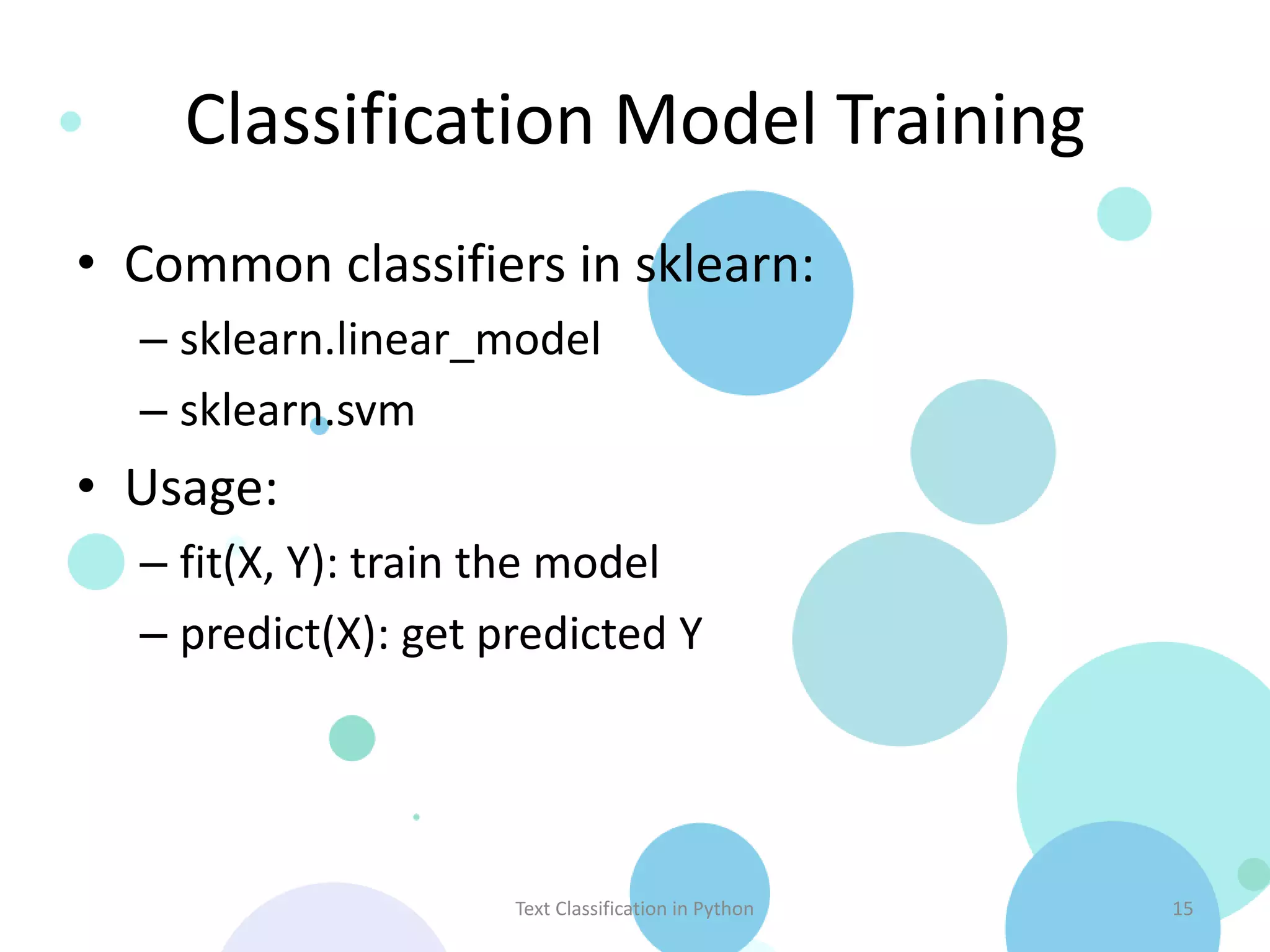
![Cross Validation • When tuning the parameters of model, let each article as training and testing data alternately to ensure the parameters are not dedicated to some specific articles. – from sklearn.cross_validation import KFold – for train_index, test_index in KFold(10, 2): • train_index = [5 6 7 8 9] • test_index = [0 1 2 3 4] Text Classification in Python 16](https://image.slidesharecdn.com/textclassificationinpython-130218042632-phpapp01/75/Text-Classification-in-Python-using-Pandas-scikit-learn-IPython-Notebook-and-matplotlib-16-2048.jpg)
